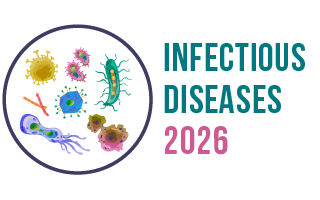4th International Conference on
Infectious Diseases
September 09-10, 2026 | Barcelona, Spain

Infectious Diseases 2026

Long Island Jewish Medical Center, USA
Abstract:
Central Line-Associated Bloodstream Infections (CLABSI) present a significant risk to dialysis patients, primarily due to prolonged central line use. At our facility, baseline rates in 2024 reached 9 infections per 1,000 catheter days, prompting a multi-pronged quality improvement initiative. Key interventions included revising the scrub-the-hub protocol to align with IFU standards, implementing Tego cap changes each treatment, introducing a structured algorithm for non-tunneled to tunneled catheter conversions, and establishing a pre-procedural checklist requiring dual CHG baths and MRSA/MSSA screening with targeted decolonization. Comprehensive staff education, simulation training, and real-time compliance audits reinforced adherence. Additional measures, such as dedicated drainage line holders and waste bucket changes between patients, further reduced cross-contamination risk.
Post-implementation (July 2024–2025), CLABSI rates dropped to zero, with projected cost avoidance of approximately $48,108 per prevented event (AHRQ estimates). This project demonstrates that targeted protocol revisions, combined with continuous staff engagement and monitoring, can achieve sustained elimination of CLABSIs in high-risk dialysis populations.
Biography:
Natalia Kaminsky, MSN, RN, CIC, is a Senior Infection Preventionist specializing in emergency medicine and acute care infection prevention. She has led multiple successful HAI reduction initiatives and is an advocate for evidence-based practice and interdisciplinary collaboration.
